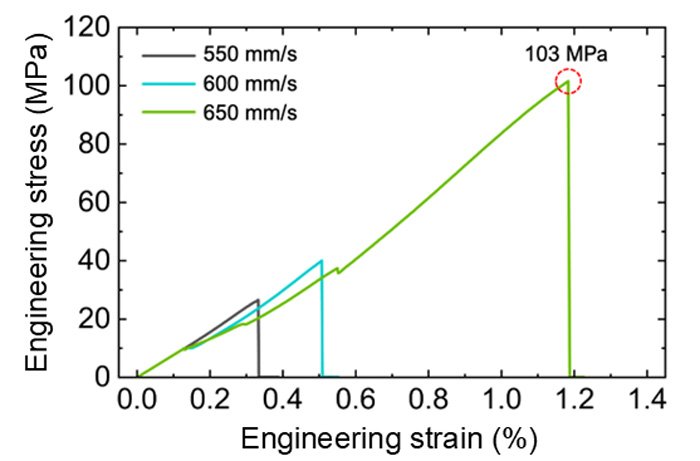Researchers at Tohoku University’s Institute for Materials Research and New Industry Creation Hatchery Center have made a breakthrough in a multi-material 3D printing technique, demonstrating the process for creating a lightweight yet durable automobile part.
The process of metal 3D printing involves building objects by depositing metals layer by layer, using heat to bind them together. The precision of 3D printing allows for the production of unique, highly customizable shapes that often create less wasteful byproducts than traditional manufacturing methods. “Multi-material structures” which strategically combine different materials for optimal performance of a component can also be created via 3D printing. For example, steel automobile parts can be made more lightweight by combining them with aluminum. Due to these benefits, mastering such 3D printing techniques is garnering considerable attention from researchers.
However, this technique does come with some challenges.

“Multi-materials are a hot topic in the field of additive manufacturing due to its process flexibility,” explains Associate Professor Kenta Yamanaka (Tohoku University), “However, a major challenge in practical implementation is that for certain metal combinations, such as steel and aluminum, brittle intermetallic compounds can be formed at the dissimilar metal interfaces. So, while the material is now lighter, it ends up being more brittle.”
The goal of this study was to produce a steel-aluminum alloy that was lightweight but did not compromise on strength. To do so, the research team used Laser Powder Bed Fusion (L-PBF), one of the primary metal 3D printing technologies that employs a laser to selectively melt metal powders. They discovered that increasing the scan speed of the laser significantly suppresses the formation of brittle intermetallic compounds (such as Al5Fe2 and Al13Fe4). They proposed that this higher scanning speed leads to something called non-equilibrium solidification, which minimizes solute partitioning that result in weak points in the material. The resulting product they created consequently demonstrated strong bonding interfaces.

“In other words, you can’t just slap two metals together and expect them to stick without a plan,” says Specially Appointed Assistant Professor Seungkyun Yim (Tohoku University),”We had to fully understand the in-situ alloying mechanism first.”
Based on this achievement, they successfully prototyped the world’s first full-scale automotive multi-material component (suspension tower) with a tailored geometry. The research group intends to apply these findings to other metal combinations where similar issues with bonding need improvement, which will allow for more broad applications.
The results were published in Additive Manufacturing on November 19, 2024.
- Publication Details:
Title: Multi-material additive manufacturing of steel/Al alloy by controlling the liquid/solid interface in laser beam powder bed fusion
Authors: Yujie Cui, Jiaxiang Li, Seungkyun Yim, Kenta Yamanaka, Kenta Aoyagi, Hao Wang, Akihiko Chiba
Journal: Additive Manufacturing
DOI:







